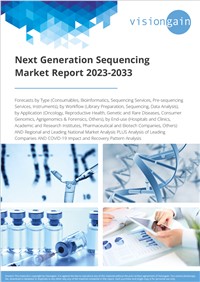The Next Generation Sequencing Market Report 2023-2033: This report will prove invaluable to leading firms striving for new revenue pockets if they wish to better understand the industry and its underlying dynamics. It will be useful for companies that would like to expand into different industries or to expand their existing operations in a new region.
Decreasing Cost, Speed and Efficiency and High Throughput Driving Market Growth
One of the primary drivers of NGS technology is the continuous reduction in sequencing costs. Over the years, the cost of sequencing has dramatically decreased, making it more accessible and affordable for researchers and clinicians. This cost reduction has enabled large-scale sequencing projects and made personalized genomics and precision medicine initiatives more feasible. NGS technology offers rapid turnaround times compared to traditional sequencing methods. It can generate billions of DNA fragments in parallel, allowing for faster data generation. The speed and efficiency of NGS have enabled real-time sequencing and the timely analysis of genomic information in clinical settings, aiding in the diagnosis of genetic disorders and informing treatment decisions. In addition, NGS technology allows for high-throughput sequencing, meaning it can process a large volume of DNA or RNA samples simultaneously. High-throughput sequencing has facilitated large-scale population studies, cancer genomics, and microbiome research, among other applications. The aforementioned factors are driving the next generation sequencing market growth.
Lack of Skilled Professional to Hamper Industry Growth
NGS technology requires specialized skills and expertise in sample preparation, library construction, data analysis, and interpretation. The lack of access to training programs and limited availability of qualified personnel proficient in NGS can hinder the widespread adoption and utilization of the technology. NGS technology requires a combination of expertise in molecular biology, genetics, bioinformatics, and data analysis. Finding professionals who possess the necessary interdisciplinary knowledge and skills can be challenging, as traditional training programs may not provide comprehensive education in all these areas.
What Questions Should You Ask before Buying a Market Research Report?
- How is the next generation sequencing market evolving?
- What is driving and restraining the next generation sequencing market?
- How will each next generation sequencing submarket segment grow over the forecast period and how much revenue will these submarkets account for in 2033?
- How will the market shares for each next generation sequencing submarket develop from 2023 to 2033?
- What will be the main driver for the overall market from 2023 to 2033?
- Will leading next generation sequencing markets broadly follow the macroeconomic dynamics, or will individual national markets outperform others?
- How will the market shares of the national markets change by 2033 and which geographical region will lead the market in 2033?
- Who are the leading players and what are their prospects over the forecast period?
- What are the next generation sequencing projects for these leading companies?
- How will the industry evolve during the period between 2023 and 2033? What are the implications of next generation sequencing projects taking place now and over the next 10 years?
- Is there a greater need for product commercialisation to further scale the next generation sequencing manufacturing market?
- Where is the next generation sequencing market heading and how can you ensure you are at the forefront of the market?
- What are the best investment options for new product and service lines?
- What are the key prospects for moving companies into a new growth path and C-suite?
You need to discover how this will impact the next generation sequencing market today, and over the next 10 years:
- Our 24-page report provides 102 tables and 139 charts/graphs exclusively to you.
- The report highlights key lucrative areas in the industry so you can target them – NOW.
- It contains in-depth analysis of global, regional and national sales and growth.
- It highlights for you the key successful trends, changes and revenue projections made by your competitors.
This report tells you TODAY how the next generation sequencing market will develop in the next 10 years, and in line with the variations in COVID-19 economic recession and bounce. This market is more critical now than at any point over the last 10 years.
Forecasts to 2033 and other analyses reveal commercial prospects
- In addition to revenue forecasting to 2033, our new study provides you with recent results, growth rates, and market shares.
- You will find original analyses, with business outlooks and developments.
- Discover qualitative analyses (including market dynamics, drivers, opportunities, restraints and challenges) and recent developments.
This report includes data analysis and invaluable insight into how COVID-19 will affect the industry and your company. Four COVID-19 recovery patterns and their impact, namely, “V”, “L”, “W” and “U” are discussed in this report.
Segments Covered in the Report
Type Outlook
- Consumables
- Bioinformatics
- Sequencing Services
- Pre-sequencing Services
- Instruments
Workflow
- Library Preparation
- Sequencing
- Data Analysis
Application
- Oncology
- Reproductive Health
- Genetic and Rare Diseases
- Consumer Genomics
- Agrigenomics & Forensics
- Others
End-use
- Hospitals and Clinics
- Academic and Research Institutes
- Pharmaceutical and Biotech Companies
- Others




